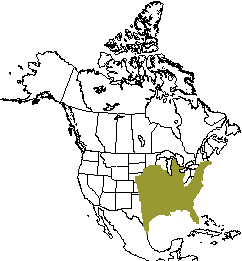|
Eastern mole Scalopus aquaticus 
|
 |
 |
| Identification: Mass: 67-140 g Body length: 139-203 mm Tail length: 25-38 mm Colour: slate to golden Young: 2-5 per litter Habitat: moist sandy loam; lawns, fields, meadows, hardwood forests; tolerates extremely dry soils Diet: primarily earthworms; also eats soil insects and some vegetable matter |

|
Distribution: Largest range of any North American mole, occuring throughout much of the United States where soils are favorable. Ranges from northern Mexico to southeastern South Dakota in the west. East into Minnesota, Wisconsin, and south of the Great Lakes in Michigan, and into extreme southwestern Ontario. Found south through Ohio into Kentucky, then northeastern into Massachusetts and much of southern New England, and then south the the southernmost tip of Florida. |
| Selected Readings: |
Arlton, A.V. 1936. An ecological study of the mole. Journal of Mammalogy, 17:349-371. Hartman, G.D. 1995. Age determination, age structure, and longevity in the mole, Scalopus aquaticus (Mammalia, Insectivora). Journal of Zoology, 237:107-122. |

|

